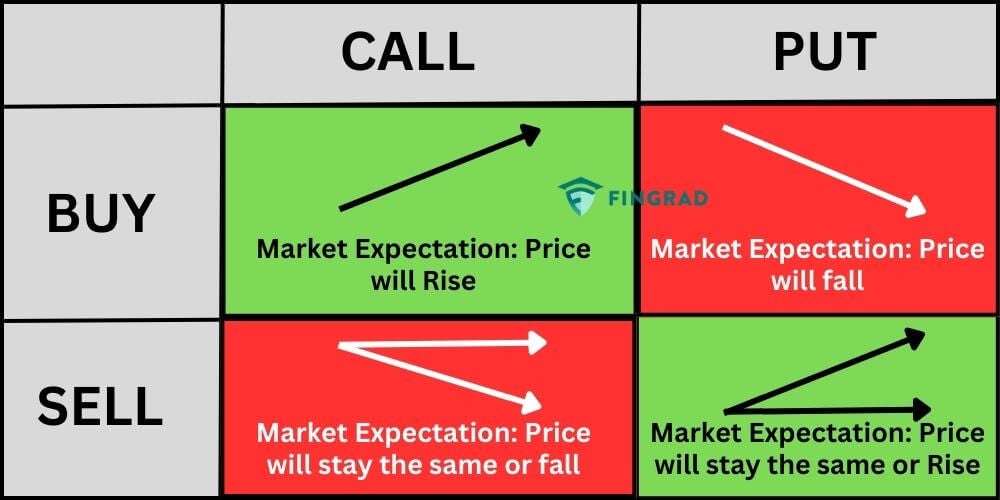The realm of finance is teeming with captivating possibilities, and among its most exhilarating arenas is options trading. Options, financial instruments that grant the right (but not the obligation) to buy or sell an underlying asset at a specified price, offer traders a potent tool for speculation. While options trading can be a lucrative endeavor, it also demands a thorough understanding of its complexities. In this comprehensive guide, we’ll venture into the heart of options trading, deciphering its intricacies and empowering you with indispensable insights to navigate its speculative potential.

Image: tradebrains.in
What are Options? Deconstructing the Fundamentals
An option can be likened to a contract, bestowing upon its holder the privilege to either purchase (call option) or dispose of (put option) an underlying asset at a predetermined price known as the strike price. This right is exercisable within a specific time frame, referred to as the option’s expiration date.
Imagine you fancy acquiring a stock currently trading at $100 per share, but you anticipate its value to soar in the near future. By purchasing a call option with a strike price of $105 and an expiration date six months hence, you secure the option to buy the stock at $105 anytime before its expiration. Should the stock indeed ascend to $120, you can exercise your call option, purchasing the stock at $105 and promptly selling it for $120, netting a handsome profit. Alternatively, if the stock languishes below $105, you simply let the option expire, forfeiting only the premium you paid to acquire it.
Options Trading as Speculation: Unveiling the Strategies
In the realm of options trading, speculation reigns supreme. Traders leverage options to wager on the future price movements of underlying assets, employing a diverse arsenal of strategies to maximize their chances of success.
One prevalent strategy is to purchase call options when bullish on an asset’s prospects. Anticipating a stock’s rise, traders acquire call options, entitling them to purchase the stock at a predetermined price if their prediction materializes. Conversely, when bearish sentiments prevail, traders opt for put options, granting them the right to sell an asset at a predefined price, profiting if its value declines.
Navigating Options Trading: Mastering the Mechanics
To delve into options trading, a brokerage account is indispensable. Once your account is established, you can commence trading options on various exchanges, such as the Chicago Board Options Exchange (CBOE) or the International Securities Exchange (ISE).
Before initiating a trade, it’s crucial to meticulously research the underlying asset, delving into its historical performance, market trends, and potential catalysts that could influence its future price movements. Armed with this knowledge, you can astutely select strike prices and expiration dates that align with your investment objectives.

Image: tradebrains.in
Unlocking the Secrets of Option Pricing: A Formula for Success
Understanding how options are priced is paramount to making informed trading decisions. The Black-Scholes model is a widely employed formula that incorporates factors such as the underlying asset’s price, strike price, time to expiration, interest rates, and volatility to calculate an option’s theoretical value.
While the Black-Scholes model provides a solid foundation for option pricing, it’s essential to recognize that real-world dynamics can introduce deviations from its theoretical calculations. Skilled traders scrutinize market conditions, including supply and demand factors, to refine their option pricing assessments and enhance their trading strategies.
Expert Insights: Wisdom from the Trading Trenches
To bolster your options trading acumen, glean wisdom from seasoned traders who have weathered market storms and emerged triumphant. Renowned investor Warren Buffett once sagely advised, “Rule No. 1: Never lose money. Rule No. 2: Never forget Rule No. 1.” Prudent risk management is the bedrock of successful trading, dictating that traders meticulously calculate their potential losses and devise contingencies to mitigate risks.
Another invaluable maxim from market wizard Jesse Livermore underscores the importance of emotional discipline: “There is nothing new in Wall Street. There can’t be because speculation is as old as the hills. Whatever happens in the stock market today has happened before and will happen again.” Recognizing that markets are cyclical and emotions can cloud judgment, disciplined traders remain steadfast in their strategies, avoiding impulsive trades that can derail their long-term success.
Trading Options As Speculation

Image: fintrakk.com
Conclusion: Embracing the Adventure of Options Trading
Options trading offers a tantalizing blend of excitement and potential rewards, but it’s a realm that demands respect and prudent navigation. By mastering its intricate mechanics, leveraging expert insights, and exercising unwavering emotional discipline, you can transform options trading from a speculative pursuit into a potent tool for financial success.
Remember, the world of finance is constantly evolving, presenting new challenges and opportunities alike. Stay abreast of market trends, seek continuous education, and refine your strategies over time. With unwavering dedication and a thirst for knowledge, you can harness the power of options trading to embark on a thrilling speculative adventure while reaping its bountiful rewards.






